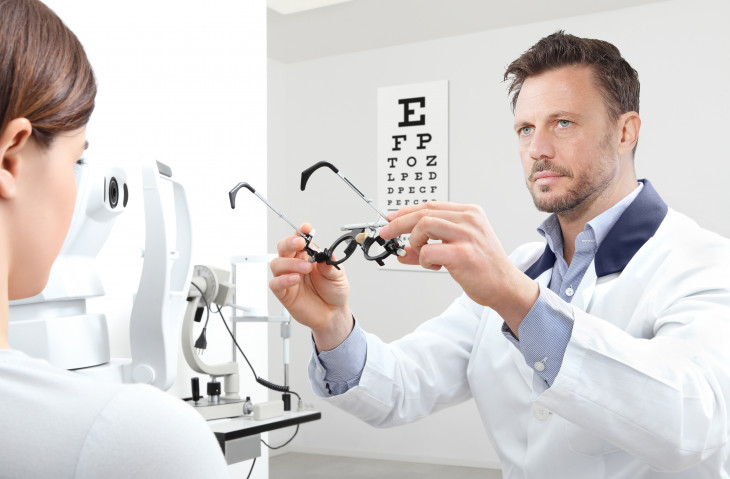Check Out the Best Optometrist Chino for Comprehensive Eye Care
Check Out the Best Optometrist Chino for Comprehensive Eye Care
Blog Article
Discovering the most recent Technological Improvements in Optometry and What They Mean for Optometrists
From the accuracy of Optical Coherence Tomography to the nuanced insights supplied by AI-driven analysis devices, these advancements are setting new requirements in patient evaluation and therapy. As these innovations penetrate the technique, eye doctors are encountered with the difficulty of welcoming these tools to enhance patient results.
Advancements in Diagnostic Equipment
Progressing the area of optometry, developments in analysis tools have revolutionized the way eye care specialists analyze and detect visual disabilities and eye conditions. The previous decade has actually seen significant technological improvements, enabling even more extensive and accurate assessments. Optical Coherence Tomography (OCT), for instance, provides high-resolution cross-sectional pictures of the retina, enabling the very early detection of conditions such as glaucoma and age-related macular degeneration. This non-invasive imaging strategy has become indispensable in modern optometric practice.
Another secret development is the intro of advanced corneal topography systems, which map the surface area curvature of the cornea with precision. These tools are specifically valuable for suitable call lenses and diagnosing corneal conditions. In addition, digital retinal imaging has actually changed conventional ophthalmoscopy, using detailed, panoramic sights of the retina that assist in extensive aesthetic examinations.
The growth of wavefront aberrometry has actually likewise been vital, making it possible for the analysis of refractive mistakes with unparalleled accuracy (Opticore Optometry). This modern technology assists in tailoring restorative lenses and boosting medical results for refractive surgeries. Collectively, these diagnostic advancements equip optometrists to provide exceptional person care, guaranteeing very early intervention and customized treatment methods, inevitably improving visual health and wellness results
AI in Person Administration
Structure on the structure of innovative diagnostic tools, the consolidation of expert system (AI) in person monitoring stands for a transformative leap for optometry. AI systems are significantly employed to improve performance, accuracy, and personalization in individual care. By analyzing huge quantities of information, AI can recognize patterns and forecast potential ocular problems, enabling optometrists to customize interventions much more efficiently. This ability is crucial in handling chronic eye illness such as glaucoma and diabetic person retinopathy, where early discovery and continual tracking are crucial.
Moreover, AI-driven systems assist in structured client interactions and management procedures. Automated scheduling, online appointments, and customized follow-up plans not just boost individual satisfaction but additionally enhance time monitoring for practitioners. These systems can triage clients based on the necessity of their problems, guaranteeing that those in essential requirement get timely focus.
Furthermore, AI enhances decision-making by offering eye doctors with evidence-based referrals and therapy paths. By incorporating data from digital health and wellness documents, AI devices use understandings that notify scientific decisions, reducing the danger of errors and enhancing individual outcomes. As AI proceeds to advance, its duty in patient monitoring will likely increase, reshaping the landscape of optometric treatment.
Developments in Retinal Imaging
In the realm of optometry, retinal imaging has seen impressive technological innovations that are boosting diagnostic abilities and client care. Technologies such as Optical Coherence Tomography (OCT) and fundus photography have changed how eye doctors imagine and evaluate Continued the retina.
Improved imaging modalities like OCT angiography are further refining analysis precision. This non-invasive technique maps blood circulation in the retina, providing vital insights into vascular wellness without the demand for color injections. In addition, flexible optics technology is being integrated right into retinal imaging systems to correct ocular aberrations, delivering unmatched photo clearness. Such developments help with the identification of minute retinal changes that can symbolize disease progression.
In addition, innovations in expert system are boosting retinal imaging by making it possible for automatic evaluation of big datasets. These systems aid eye doctors in recognizing patterns a measure of pathology, therefore boosting analysis precision and effectiveness. Collectively, these developments are changing retinal imaging right into a keystone of contemporary eye treatment, improving results and broadening healing opportunities.
Teleoptometry's Expanding Role
Teleoptometry is increasingly coming to be an essential element of eye care, driven by innovations in electronic interaction and diagnostic devices. This is specifically valuable in underserved and rural areas where access to specialized eye treatment is usually limited.
The combination of fabricated intelligence (AI) further boosts teleoptometry, enabling the evaluation of visual data and helping in the discovery of eye conditions such as glaucoma and diabetic person retinopathy. AI-powered formulas can rapidly translate intricate imaging information, providing optometrists with beneficial insights that reinforce scientific decision-making.
Additionally, teleoptometry supports continuity of treatment with smooth integration with digital health and wellness documents (EHRs), permitting optometrists to maintain comprehensive client backgrounds. This ensures that clients get regular and tailored care even when seeking advice from different professionals.
Regardless of these advantages, difficulties stay, consisting of ensuring information safety and managing patient assumptions. Nonetheless, teleoptometry represents a significant stride towards even more obtainable, reliable, and patient-centered eye care. As innovation advances, its duty is poised to broaden even more.

Future Fads in Eye Care
A myriad of cutting-edge trends is established to improve the future of eye care, driven by technical innovations and the developing needs of individuals. One significant trend is the combination of synthetic knowledge (AI) in diagnostics, which assures to enhance the accuracy and performance of eye assessments. AI algorithms can examine huge quantities of data from retinal images, potentially discovering problems like diabetic person retinopathy and glaucoma earlier than standard techniques.
Furthermore, individualized medication is obtaining traction in optometry, with hereditary screening notifying customized treatment strategies. This approach aims to maximize patient results by customizing interventions to individual genetic accounts. Wearable innovation, such as wise call lenses, is additionally coming up, using real-time surveillance of intraocular stress or glucose levels, therefore giving constant understandings right into systemic and eye health and wellness.
The adoption of increased truth (AR) and digital fact (VR) in training and person education and learning is another emerging fad. These technologies use immersive experiences that can visit the website boost understanding and skills both for individuals and eye doctors. As these patterns develop, eye doctors click to read more should stay abreast of technical innovations to supply cutting-edge treatment, guaranteeing improved client results and fulfillment in the vibrant landscape of eye treatment.
Conclusion

Collectively, these diagnostic advancements equip optometrists to provide superior person care, ensuring very early treatment and customized treatment strategies, ultimately enhancing aesthetic health results.

As these modern technologies continue to develop, eye doctors must adapt and integrate them right into practice, inevitably enhancing workflow effectiveness and boosting the criterion of eye treatment delivered to patients.
Report this page